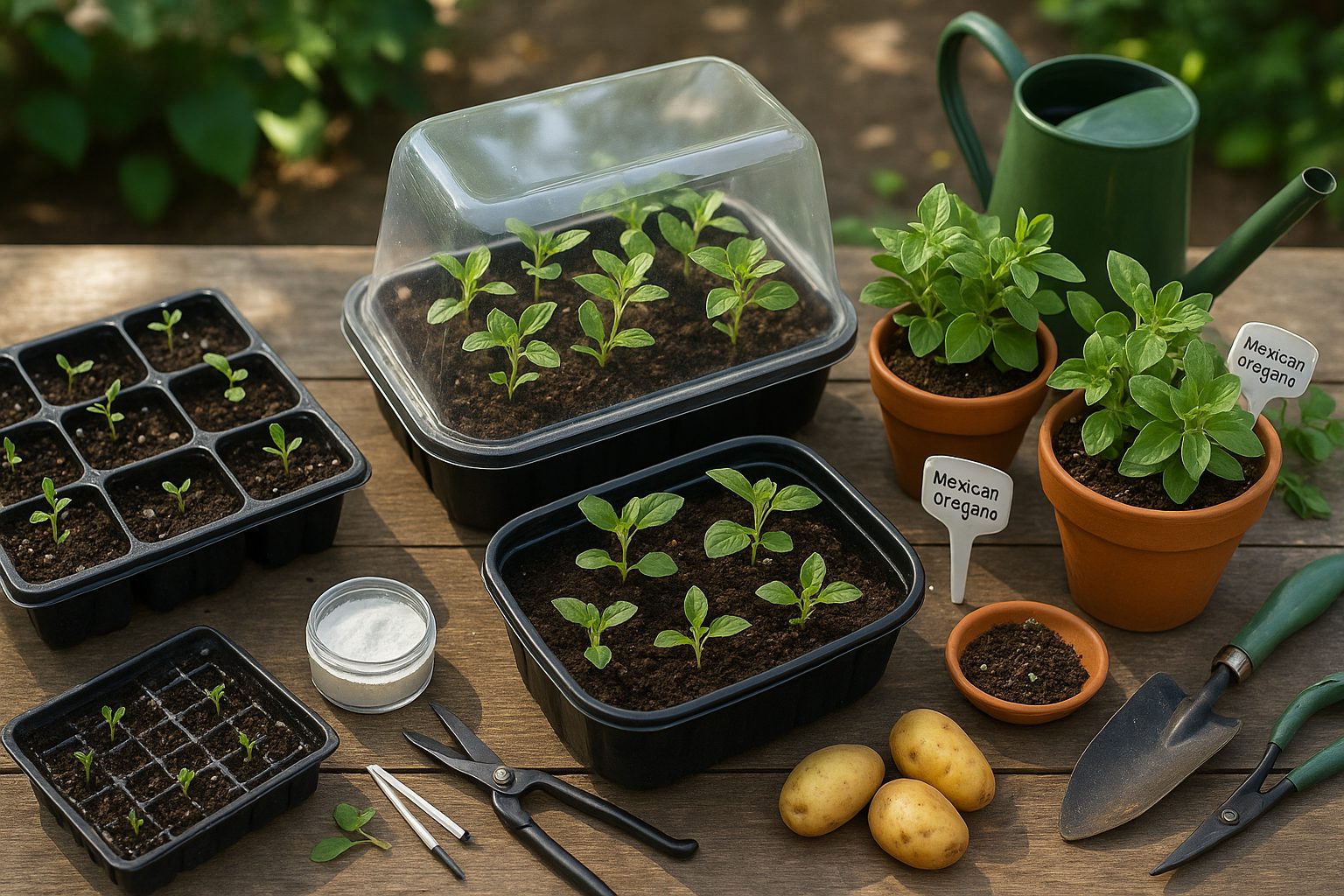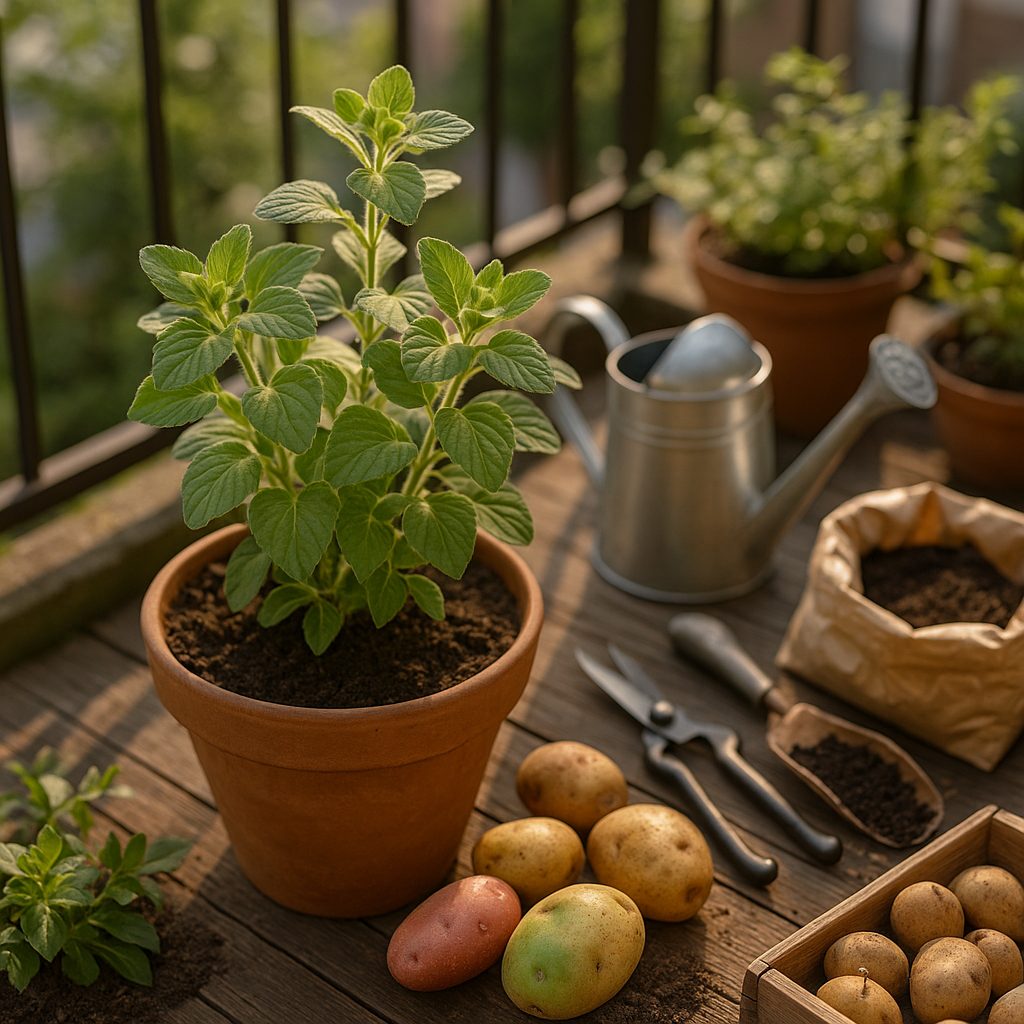Introduction to Mexican Oregano
Thinking about Mexican oregano balcony growing? You’re not alone! Mexican oregano (Lippia graveolens) is gaining popularity among home gardeners—especially those with limited space—thanks to its bold flavor and easy-care nature. Unlike its more familiar Mediterranean cousin (Origanum vulgare), Mexican oregano belongs to the verbena family. Its leaves boast a citrusy, robust profile that makes it a star in Latin American dishes like pozole, salsas, and tacos, adding an aromatic punch beyond what traditional oregano can offer.
What makes Mexican oregano balcony growing particularly appealing is the plant’s hardiness and adaptability. Even in pots tucked onto a sunny balcony or patio, this herb thrives with minimal fuss. It tolerates heat, occasional drought, and less-than-perfect soil—making it perfect for beginner gardeners or anyone with a busy schedule. Plus, snipping fresh leaves right outside your door instantly elevates home-cooked meals.
With more people seeking fresh, homegrown ingredients, there’s real joy in nurturing plants that aren’t just beautiful but also useful. Mexican oregano’s unique flavor, resilience to urban growing challenges, and versatility in the kitchen make it a smart, rewarding choice for small-space gardeners everywhere.
Culinary and Medicinal Uses

Mexican oregano stands out with its bold, citrusy flavor and hints of mild licorice and pepper, making it more vibrant than the milder Mediterranean oregano most people know. This distinct taste enriches traditional Mexican and Latin American dishes—think hearty pozole, sizzling carnitas, punchy chile sauces, and savory black bean soups, where a pinch of dried leaves adds unmistakable depth and warmth.
It also shines in homemade salsas, taco fillings, and enchilada sauces, pairing especially well with cumin, chili powder, and garlic.
Beyond its culinary flair, Mexican oregano has long been used in folk medicine—teas brewed from its leaves are said to soothe coughs, stomach aches, and symptoms of colds, thanks to its antioxidant and antimicrobial compounds.
To incorporate it more into your everyday meals, try substituting Mexican oregano for Italian oregano in tomato sauces or salad dressings for a unique spin, or sprinkle a little over roasted vegetables or grilled meats just before serving to unlock its aromatic oils. Remember, a little goes a long way, so start with small amounts and adjust to taste.
Climate, Soil, and Light Requirements
Mexican oregano thrives best in warm, dry climates typical of USDA Hardiness Zones 9 to 11, where temperatures rarely drop below 20°F (-6°C). If you live in an area with milder winters, you can grow Mexican oregano outdoors year-round; otherwise, consider planting it in containers that can be moved indoors during cold spells.
This herb prefers well-draining, sandy or loamy soil—heavy clay or waterlogged spots can quickly lead to root rot. To improve drainage, mix in coarse sand or perlite, and boost vitality with a handful of compost or aged manure.
Mexican oregano is a sun-lover and yields the fullest, most aromatic foliage in full sun—around 6 to 8 hours of direct light per day. While it tolerates partial shade, you’ll notice the plant becomes leggier and less productive, and the leaves may not develop their signature punchy flavor as intensely.
To ensure bushy growth and rich taste, pick a sunny, sheltered spot in your garden or the brightest windowsill indoors. With the right mix of warmth, loose soil, and abundant light, you’ll set the stage for healthy, flavorful Mexican oregano harvests.
How to Grow and Propagate Mexican Oregano

Growing Mexican oregano is a rewarding project, whether you start from seeds or cuttings.
For seeds, begin indoors about 6-8 weeks before your last expected frost. Sprinkle seeds lightly on moist potting soil and press them gently—don’t cover, as they need light to germinate. Keep the soil consistently damp and warm (around 70°F), and expect sprouts within two weeks. Once seedlings are a couple of inches tall and nighttime temperatures stay above 55°F, harden them off over a week and transplant them into the garden or containers.
For cuttings, snip 4- to 6-inch stems from healthy plants in late spring. Strip the lower leaves and dip the ends in rooting hormone. Plant the cuttings in a mix of perlite and peat, water lightly, and cover with a plastic dome or zip bag for humidity—roots usually form in 3-4 weeks.
In the ground, space plants about 18 inches apart in full sun and well-drained soil. For containers, use pots at least 8 inches wide with drainage holes. Water deeply but infrequently—about once per week—and let the soil dry out between waterings, as Mexican oregano dislikes soggy roots.
During the first month, pinch off flower buds to encourage bushy growth and help roots establish.
If seeds don’t germinate well, double-check the temperature and avoid letting the soil dry out. With cuttings, rot is a common issue—allow cut ends to dry for a few hours before planting and never overwater.
Following these steps will help you enjoy lush, fragrant Mexican oregano in your kitchen or garden.
Regular Care, Protection, and Seasonal Maintenance
Keeping your garden healthy year-round starts with consistent watering—aim for deep, less frequent watering rather than light, daily sprinkles to encourage strong root growth. Prune dead or diseased branches as soon as you spot them, and trim back excess growth after flowering to boost airflow and prevent overcrowding.
Mulching is a game-changer: apply a two- to three-inch layer of organic mulch around plants in spring or fall to retain moisture, suppress weeds, and regulate soil temperature. Keep an eye out for common pests like aphids and spider mites; rinse leaves with water to remove them or use insecticidal soap as needed.
Fungal diseases, like powdery mildew, often thrive in damp or crowded conditions—space plants out and avoid overhead watering to minimize risk. As colder months approach, protect sensitive plants from frost by covering them overnight with burlap or frost cloth, and consider adding extra mulch around the base to insulate roots.
For perennials, cut back dead foliage after the first frost and keep the soil only lightly moist to prevent rot. Each season, observe your plants’ needs: increase watering in hot, dry weather, and scale back during rainy spells or winter dormancy. By adapting your care routine to your climate and plant types, you’ll help your garden thrive through every season.
Harvesting, Preserving, and Storing
To get the best flavor from oregano, harvest the leaves just before the plant flowers, ideally in the morning after the dew has dried—this is when the oils are most concentrated. Use clean, sharp scissors to snip the stems, and avoid taking more than a third of the plant at once to encourage regrowth.
For drying, bundle a few stems together and hang them upside down in a warm, dark, well-ventilated spot for about a week. Then crumble the leaves and store them in an airtight container away from sunlight.
If you prefer freezing, chop the fresh leaves and pack them into ice cube trays with a bit of water or olive oil. This preserves both flavor and color, making it easy to grab a portion for cooking.
For fresh storage, wrap stems in a damp paper towel, place them in a resealable bag, and refrigerate. This can keep the leaves vibrant for up to a week.
Whether dried, frozen, or fresh, always store oregano in cool, dark places, away from heat and moisture, to maintain its bold, aromatic qualities as long as possible.
Creative Ways to Use Mexican Oregano
Mexican oregano isn’t just for tacos and enchiladas—it shines in a variety of unexpected dishes. Try blending it into homemade vinaigrettes with olive oil, lemon juice, and a hint of honey to add an earthy, citrusy kick to your salads.
Its robust flavor works wonders when sprinkled onto roasted vegetables like carrots, sweet potatoes, or cauliflower, especially alongside thyme or rosemary.
For a delicious twist, infuse it into a marinade for grilled fish or chicken by combining Mexican oregano with garlic, lime zest, cumin, and chili flakes.
Don’t stop at savory dishes; steep a teaspoon of dried Mexican oregano in hot water with a slice of orange or lemon to create a soothing herbal tea perfect for chilly evenings.
You can also experiment with seasoning homemade popcorn—mix with parmesan and smoked paprika for a vibrant snack.
Be bold and explore pairing Mexican oregano with Mediterranean staples like feta cheese or olives, and add a pinch to bean dips or hummus for an extra layer of flavor.
The possibilities are endless, so let your curiosity guide you and discover new favorites along the way.
